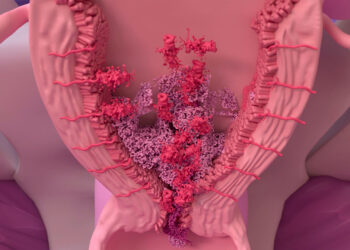TOPLINE:
In women with intrahepatic cholestasis of pregnancy (ICP), higher peak bile acid levels and elevated maternal BMI (24.6) were associated with an increased risk for pruritus severity deterioration as gestation advanced. The risk was higher in women with severe ICP than in those with mild ICP (peak bile acid levels ≥ 100 vs < 40 μmol/L).
METHODOLOGY:
- Researchers conducted a longitudinal observational study involving 139 women with ICP who were recruited from nine UK hospitals and ICP Support charity between 1997 and 2020.
- All women were evaluated for serum bile acid, alanine aminotransferase (ALT), and bilirubin levels.
- The severity of pruritus was measured on a 100-mm visual analog scale (VAS) and categorised as none (0 mm), mild (1-29 mm), moderate (30-59 mm), severe (60-79 mm), and very severe (80-100 mm).
- The severity of ICP was categorised on the basis of peak bile acid levels as mild ICP (< 40 μmol/L), moderate ICP (40-99 μmol/L), and severe ICP (≥ 100 μmol/L).
- The main outcome was pruritus deterioration, defined as at least a one-level increase in the VAS category of pruritus severity from baseline during gestation.
TAKEAWAY:
- Among the 139 women with ICP, 53% experienced pruritus worsening.
- Peak bile acid (log-transformed) levels (odds ratio [OR], 2.36; 95% CI, 1.22-4.56) and maternal BMI (OR, 2.40; 95% CI, 1.20-4.81) were independent risk factors for pruritus severity deterioration.
- Women with severe ICP showed a higher likelihood of pruritus deterioration than those with mild ICP (OR, 7.45; 95% CI, 1.43-38.86).
- Although baseline serum bile acid, ALT, and bilirubin levels did not differ between women with and without pruritus deterioration, peak and last bile acid levels were significantly higher in those with pruritus deterioration (P = .01 for both).
IN PRACTICE:
“By assessing the alteration of pruritus over advancing pregnancy within the same individual, we observed that pruritus severity varies regardless of the baseline bile acid concentration,” the authors wrote.
SOURCE:
This study was led by Xi Yang, Department of Women and Children’s Health, King’s College London, London, England, and was published online on July 21, 2025, in the European Journal of Obstetrics & Gynecology and Reproductive Biology.
LIMITATIONS:
The authors were unable to assess factors associated with itch progression among patients who presented with very severe itching at baseline. This study did not assess the change in pruritus over a consistent period due to irregular intervals between each patient’s visit. Participants did not receive standardised treatment regimens due to the observational study design.
DISCLOSURES:
This study was supported by grants from the Wellcome Trust and ICP Support. The authors declared having no conflicts of interest.
This article was created using several editorial tools, including AI, as part of the process. Human editors reviewed this content before publication
Source link : https://www.medscape.com/viewarticle/what-drives-pruritus-severity-pregnancy-cholestasis-2025a1000jpy?src=rss
Author :
Publish date : 2025-07-29 12:00:00
Copyright for syndicated content belongs to the linked Source.












